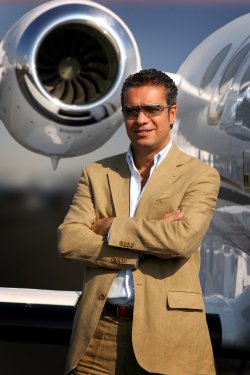UK charter operator London Executive Aviation (LEA) is to divide its ordered fleet of Cessna Citation Mustang very-light jets (VLJ) between London and regional airports because it expects air taxi demand to spread beyond the capital’s financial centre.
 LEA currently operates its fleet of nine Citation light jets and six piston and turboprop aircraft from its bases at London Stansted, London Luton and Farnborough, although much of its activity is from London City airport, where it has a handling facility. At last month’s US National Business Aviation Association annual convention and exhibition, the company placed an order for seven Mustangs, making it the largest customer for the type in Europe.
LEA currently operates its fleet of nine Citation light jets and six piston and turboprop aircraft from its bases at London Stansted, London Luton and Farnborough, although much of its activity is from London City airport, where it has a handling facility. At last month’s US National Business Aviation Association annual convention and exhibition, the company placed an order for seven Mustangs, making it the largest customer for the type in Europe.
LEA will take delivery of the first aircraft in late 2007 and expects to receive two every quarter until the final quarter of 2008. However, LEA managing director George Galanopoulos says the firm order could be followed by at least as many again, once delivery dates are confirmed with the manufacturer.
LEA expects air-taxi costs of the Mustang to be 30-40% lower than for the existing fleet, because of greater utilisation and better tools to sell aircraft time outside the UK. “The average utilisation of our fleet is 400-500h a year and it’s not enough to bring down the cost of corporate charter travel, but the VLJs have the potential to be full 700-800h a year,” says Galanopoulos.
He credits charter brokerage software such as Avinode as part of the “revolution” that is changing charter operations, with empty legs being filled and operating costs cut dramatically. He says the reduced cost will enable the operator to finally win business from medium-sized companies at locations outside central London.
“If it’s as popular as we expect, we’d base the Mustangs in several locations,” he says. “In addition to our existing London sites, we could add Birmingham and Manchester.” Despite this, certificating the Mustang for London City’s steep approach runway will be one of the operator’s key priorities, because it expects about 40% of its traffic to originate at the airport.
JUSTIN WASTNAGE/LONDON
Source: Flight International



















